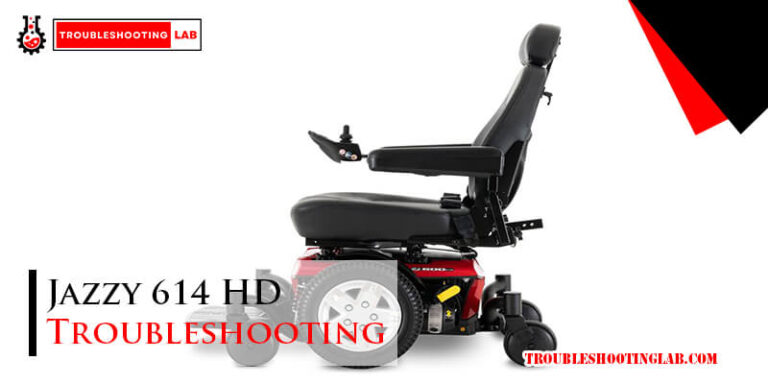Singer Sewing Machine Troubleshooting: Quick Fixes!
If you’re experiencing issues with your Singer sewing machine, troubleshoot by checking the bobbin, needle, and tension. Make sure the bobbin is loaded and threaded correctly, the needle is properly inserted and not bent, and the tension is adjusted properly for the type of fabric you’re using.
Singer sewing machines are reliable and popular, but even the best machines can experience issues. Whether you’re an experienced sewer or just starting out, it can be frustrating when your machine doesn’t work as it should. Fortunately, many common problems can be solved through simple troubleshooting steps.
By checking the bobbin, needle, and tension, you can often identify and fix the issue quickly and easily. We’ll walk you through some of the most common Singer sewing machine troubleshooting tips to help you get back to your sewing projects as soon as possible.
Common Singer Sewing Machine Issues
If you’re experiencing issues with your Singer sewing machine, you may encounter problems such as thread bunching, needle breakage, or machine jamming. Troubleshooting these common issues involves checking the needle position, thread tension, and bobbin threading to ensure smooth sewing operation.
Regular maintenance and proper usage can help prevent these problems.
Singer Sewing Machine Troubleshooting: Common Singer Sewing Machine Issues
If you own a Singer sewing machine, you may encounter some common issues while using it. Understanding these problems and their solutions can help you troubleshoot your machine and ensure smooth stitching. In this section, we will discuss two frequently encountered issues: skipped stitches and thread bunching under fabric.
Skipped Stitches
Skipped stitches can be frustrating, but there are a few reasons why they may occur. Here are some possible causes:
- Incorrect needle selection or installation
- Thread tension set too tight or too loose
- Dull or bent needle
- Improper machine threading
To fix skipped stitches, try the following steps:
- Ensure you are using the correct needle for your fabric type and weight.
- Double-check the needle installation to make sure it is inserted correctly.
- Adjust the thread tension gradually, testing after each adjustment until the stitches are formed correctly.
- Replace the needle if it appears dull or bent.
- Re-thread the machine, following the correct threading path as per your machine’s manual.
Thread Bunching Under Fabric
Another common issue that Singer sewing machine users may face is thread bunching under the fabric. This can result in messy stitches and an uneven finish. Here are some potential causes:
- Incorrect bobbin placement or installation
- Improper bobbin tension
- Thread caught in the bobbin case
- Incorrect threading of the upper thread
To resolve thread bunching under fabric, try the following steps:
- Ensure the bobbin is correctly placed and installed in the bobbin case.
- Check the bobbin tension and adjust it if necessary.
- Remove the bobbin case and clean out any thread or debris that may be causing the issue.
- Re-thread the upper thread, making sure it follows the correct threading path.
By addressing these common Singer sewing machine issues, you can improve the performance of your machine and achieve high-quality stitches. Remember to consult your machine’s manual for specific troubleshooting instructions and seek professional assistance if needed.
Maintenance Tips For Smooth Operation
To ensure smooth operation of your Singer sewing machine, regular maintenance is key. Keep the machine clean, lubricated, and properly threaded. Check for any loose parts or tangled threads. Follow the manufacturer’s guidelines for troubleshooting any issues promptly to avoid major breakdowns.
Maintenance Tips for Smooth Operation:
Sewing machines are an essential tool for those who love to sew. However, like any other machine, they require regular maintenance to keep them running smoothly. In this section, we will discuss some maintenance tips for your Singer sewing machine to ensure its smooth operation for years to come.
Regular Cleaning Routines:
Regular cleaning of your Singer sewing machine is crucial to keep it running smoothly. Here are some steps to follow:
1. Turn off and unplug the machine before cleaning.
2. Use a soft-bristled brush to remove lint, dust, and debris from the machine.
3. Clean the bobbin case and feed dogs with a small brush or lint roller.
4. Use a soft, damp cloth to wipe down the exterior of the machine.
5. Don’t forget to clean the foot pedal and power cord.
Proper Lubrication Techniques:
Proper lubrication is essential to maintain the smooth operation of your Singer sewing machine. Here are some steps to follow:
1. Always use high-quality sewing machine oil.
2. Apply a drop of oil to the hook race, bobbin case, and needle bar after every five hours of use.
3. Wipe off any excess oil with a clean cloth.
4. Avoid using too much oil as it can attract dust and lint.
In conclusion, regular maintenance of your Singer sewing machine is crucial to keep it running smoothly. By following these maintenance tips, you can ensure that your machine lasts for many years.
Solving Tension Problems
One of the most common issues that sewers encounter when using a Singer sewing machine is tension problems. Incorrect tension can result in uneven stitches, loops, or puckering of the fabric. However, with a little troubleshooting and adjustment, you can easily solve tension problems and achieve the perfect stitch. In this section, we will discuss two key aspects of tension troubleshooting: adjusting upper thread tension and balancing bobbin thread tension.
Adjusting Upper Thread Tension
Proper upper thread tension is crucial for achieving balanced stitches. If your stitches are too tight or too loose, you may need to adjust the upper thread tension. Here’s how:
- Start by threading your Singer sewing machine properly, ensuring that the thread passes through all the necessary guides and tension discs.
- Set your machine to a medium stitch length and width.
- Take a scrap piece of fabric and sew a test seam.
- Examine the stitches. If the upper thread is too loose and the bobbin thread is showing on the top of the fabric, tighten the tension by turning the dial or knob to a higher number. If the upper thread is too tight and causing the fabric to pucker, loosen the tension by turning the dial or knob to a lower number.
- Continue adjusting the tension and testing the stitches until you achieve a balanced stitch with the upper and bobbin threads interlocking perfectly in the middle of the fabric.
Balancing Bobbin Thread Tension
Bobbin thread tension plays a vital role in the overall stitch quality. If the bobbin thread is too loose or too tight, it can affect the appearance and durability of your stitches. Here’s how to balance the bobbin thread tension:
- Remove the bobbin case from your Singer sewing machine.
- Check the tension screw located on the side of the bobbin case. If the thread is too loose, tighten the screw by turning it clockwise. If it is too tight, loosen the screw by turning it counterclockwise. Make small adjustments at a time.
- Replace the bobbin case and thread it properly.
- Sew a test seam on a scrap piece of fabric.
- Examine the stitches. If the bobbin thread is too loose and showing on the top of the fabric, tighten the tension screw slightly. If it is too tight and causing the fabric to pucker, loosen the tension screw slightly.
- Continue adjusting the tension until you achieve a balanced stitch with both the upper and bobbin threads interlocking perfectly in the middle of the fabric.
By understanding and troubleshooting tension problems, you can ensure smooth and flawless stitching with your Singer sewing machine. Remember to make small adjustments, test your stitches, and take your time to achieve the desired results.
Needle And Thread Compatibility
When troubleshooting issues with your Singer sewing machine, it’s crucial to consider the compatibility of the needle and thread. Proper needle and thread selection is essential for achieving optimal stitching results. Let’s delve into the key factors of needle and thread compatibility.
Choosing The Right Needle
Correct needle selection is vital for preventing stitching problems. Ensure the needle type matches the fabric being sewn. For instance, universal needles are suitable for general sewing, while ballpoint needles are ideal for knit fabrics.
Matching Thread Weight And Fabric
Matching the thread weight to the fabric weight is crucial. Use lightweight threads for delicate fabrics and heavier threads for sturdier materials. Always consider the fabric’s thickness and composition when selecting the appropriate thread weight.
Troubleshooting Stitch Quality
For Singer sewing machine troubleshooting, mastering stitch quality is key. Ensure correct tension settings, needle type, and bobbin threading. Clean the machine regularly for optimal performance.
Correcting Uneven Stitches
Uneven stitches can be frustrating when you’re in the middle of a sewing project. Fortunately, there are several troubleshooting steps you can take to correct this issue.
- Check the tension settings: Incorrect tension can cause uneven stitches. Ensure that the upper and lower thread tensions are properly adjusted according to your machine’s manual.
- Clean the machine: Dust and lint buildup can affect stitch quality. Regularly clean your sewing machine, especially the bobbin area, to prevent any obstructions.
- Replace the needle: A dull or bent needle can lead to uneven stitches. Replace the needle with a new one and make sure it is the correct size and type for your fabric.
- Re-thread the machine: Improper threading can also cause stitching issues. Follow the threading instructions in your machine’s manual, making sure the thread is correctly placed in the tension discs and the bobbin.
- Test different fabrics and threads: Sometimes, the fabric or thread you are using may not be compatible with your machine. Experiment with different combinations to find the best match for smooth stitches.
Resolving Stitches Not Forming
When your stitches are not forming at all, it can be frustrating and halt your sewing progress. Here are some troubleshooting tips to help you resolve this issue:
- Check the bobbin: Ensure that the bobbin is correctly inserted and wound with the right amount of tension. Make sure the bobbin thread is pulled through the tension spring or guide properly.
- Verify the needle position: The needle should be inserted correctly, with the flat side facing the back of the machine. If it is not properly positioned, reinsert it following the machine’s manual.
- Inspect the bobbin case: Remove the bobbin case and check for any lint, debris, or tangled thread. Clean the case thoroughly and ensure it is properly seated back into the machine.
- Adjust the stitch length and width: If the stitch length or width is set too low, the stitches may not form. Increase the settings slightly and test the machine to see if the stitches start forming.
- Check the machine’s timing: If none of the above steps work, the machine’s timing may be off. This requires professional assistance, so contact a sewing machine technician for further troubleshooting.
By following these troubleshooting steps, you can resolve stitch quality issues and ensure smooth and even stitches while using your Singer sewing machine.
Frequently Asked Questions
How Do I Fix A Jammed Singer Sewing Machine?
If your Singer sewing machine is jammed, first, turn it off and unplug it. Gently remove the fabric and cut the threads. Clean out any lint or debris from the bobbin area and rethread the machine. Ensure the needle is not bent and the bobbin is inserted correctly.
Why Is My Singer Sewing Machine Not Stitching?
If your Singer sewing machine is not stitching, check the needle to ensure it’s not bent or dull. Make sure the machine is threaded correctly, and the bobbin is inserted in the right direction. Also, check the tension settings and adjust if needed.
How Often Should I Oil My Singer Sewing Machine?
You should oil your Singer sewing machine after every 8 hours of use. Use only sewing machine oil and follow the manufacturer’s instructions for oiling specific parts. Over-oiling can attract lint and debris, so apply oil sparingly to avoid buildup.
Conclusion
Troubleshooting Singer sewing machines is manageable with patience and proper guidance. By following these tips, you can easily fix common issues and get back to your sewing projects quickly. Remember to refer to the user manual and seek professional help if needed for more complex problems.






